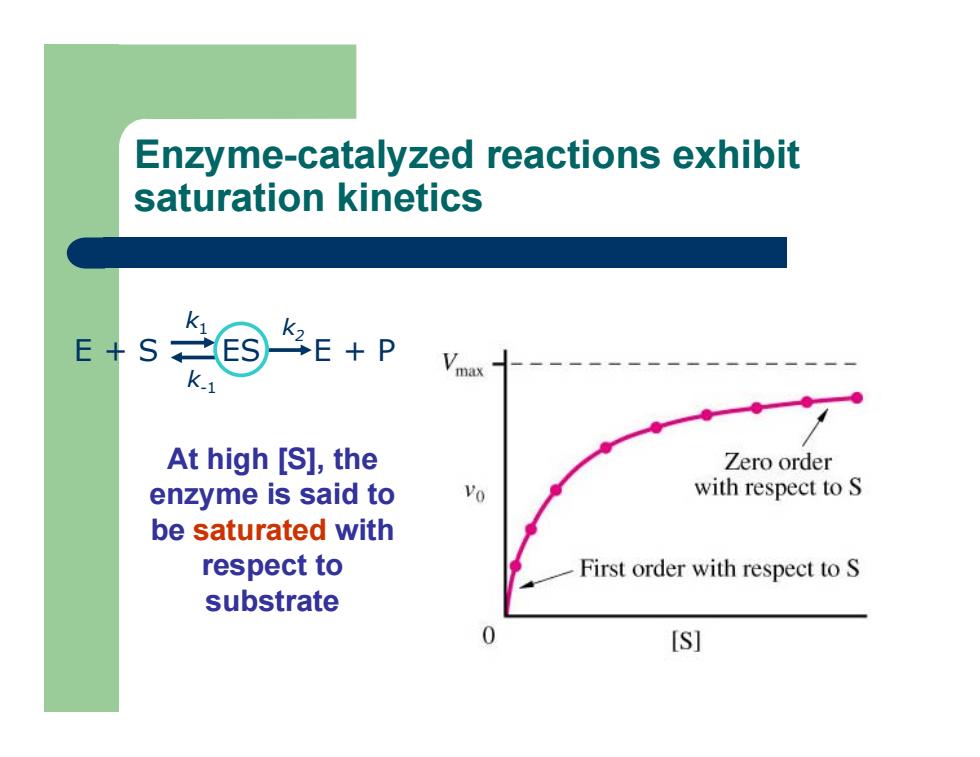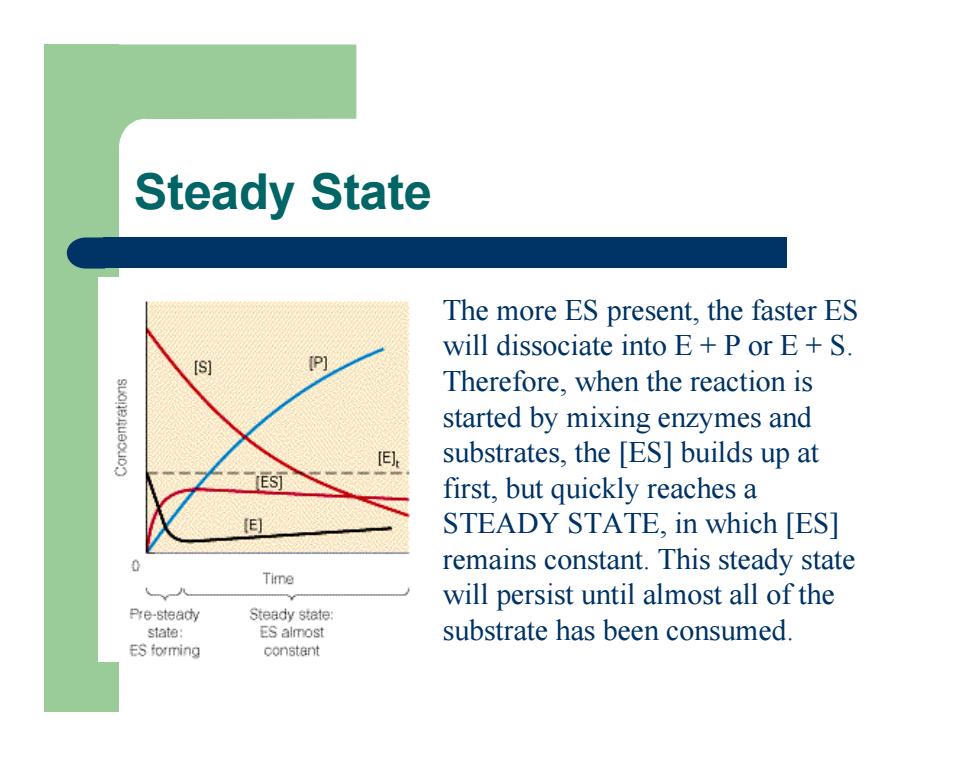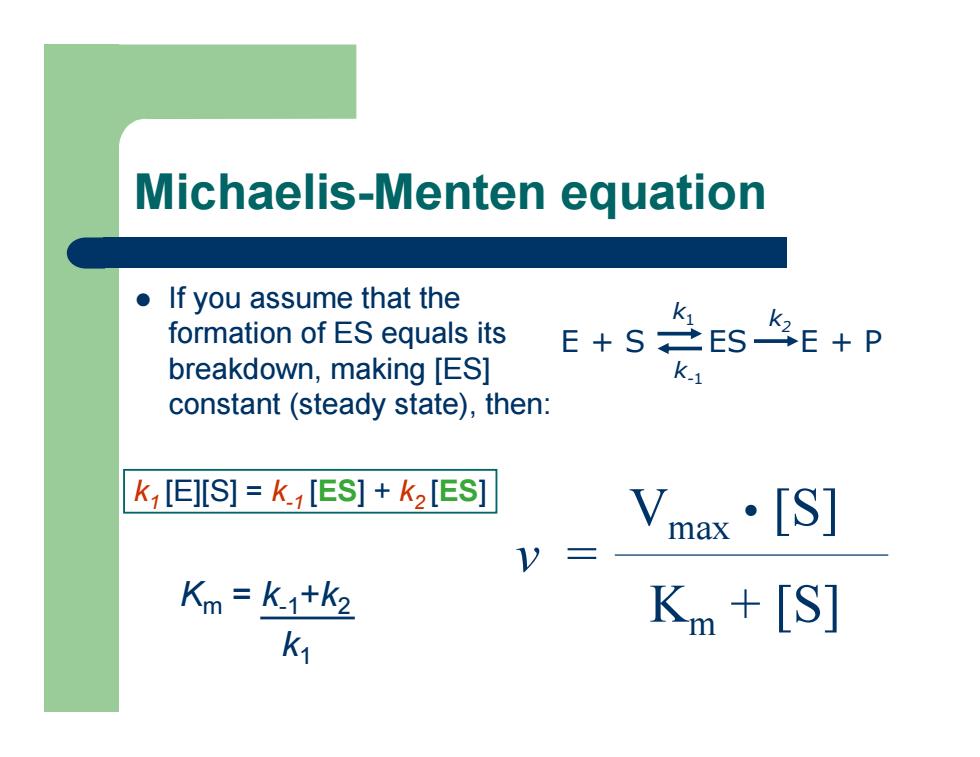
Enzyme-catalyzed reactions exhibit saturation kinetics E + S ES E + P k 1 k-1 k2 At high [S], the enzyme is said to be saturated with respect to substrate
Enzyme-catalyzed reactions exhibit saturation kinetics E + S ES E + P k 1 k-1 k2 At high [S], the enzyme is said to be saturated with respect to substrate

Steady State The more ES present, the faster ES will dissociate into E + P or E + S. Therefore, when the reaction is started by mixing enzymes and substrates, the [ES] builds up at first, but quickly reaches a STEADY STATE, in which [ES] remains constant. This steady state will persist until almost all of the substrate has been consumed
Steady State The more ES present, the faster ES will dissociate into E + P or E + S. Therefore, when the reaction is started by mixing enzymes and substrates, the [ES] builds up at first, but quickly reaches a STEADY STATE, in which [ES] remains constant. This steady state will persist until almost all of the substrate has been consumed

Michaelis-Menten equation z If you assume that the formation of ES equals its breakdown, making [ES] constant (steady state), then: Km = k-1 + k2 k 1 v = Vmax • [S] Km + [S] E + S ES E + P k 1 k-1 k2 k1 [E][S] = k-1 [ES] + k2 [ES ]
Michaelis-Menten equation z If you assume that the formation of ES equals its breakdown, making [ES] constant (steady state), then: Km = k-1 + k2 k 1 v = Vmax • [S] Km + [S] E + S ES E + P k 1 k-1 k2 k1 [E][S] = k-1 [ES] + k2 [ES ]